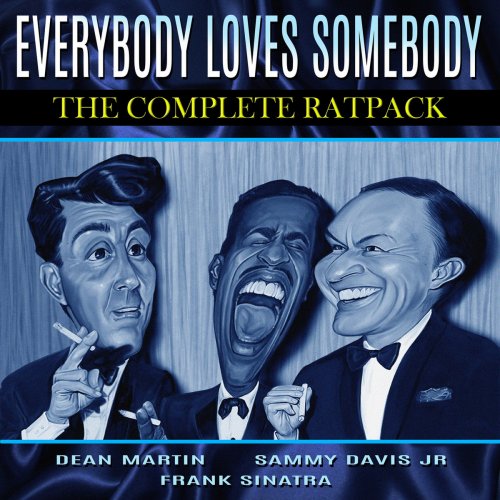Günter Wand & NDR Symphony Orchestra - Beethoven: Symphonies Nos. 1-9 (2007) [SACD]
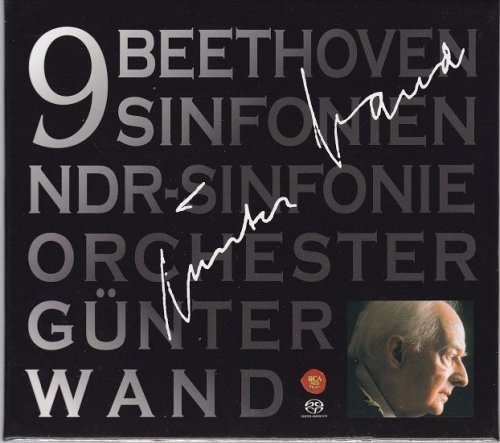
Artist: Günter Wand, NDR Symphony Orchestra
Title: Beethoven: Symphonies Nos. 1-9
Year Of Release: 2007
Label: BMG / RCA Red Seal / Esoteric
Genre: Classical
Quality: DSD64 image (*.iso) 2.0
Total Time: 5:56:24
Total Size: 14.48 GB
WebSite: Album Preview
Title: Beethoven: Symphonies Nos. 1-9
Year Of Release: 2007
Label: BMG / RCA Red Seal / Esoteric
Genre: Classical
Quality: DSD64 image (*.iso) 2.0
Total Time: 5:56:24
Total Size: 14.48 GB
WebSite: Album Preview
SACD 1: BVCC-37473 Symphonies Nos.1 & 3
![Günter Wand & NDR Symphony Orchestra - Beethoven: Symphonies Nos. 1-9 (2007) [SACD]](https://img.israbox.com/uploads/posts/2018-07/1533017383_sacd-1.jpg)
![Günter Wand & NDR Symphony Orchestra - Beethoven: Symphonies Nos. 1-9 (2007) [SACD]](https://img.israbox.com/uploads/posts/2018-07/1533017383_sacd-1.jpg)
Tracklist:
Ludwig van Beethoven - Sinfonie Nr. 1 C-Dur, Op. 21:
1. I. Adagio molto - Allegro con brio 8:44
2. II. Andante cantabile con moto 8:33
3. III. Menuetto. Allegro molto e vivace 3:29
4. IV. Finale. Adagio - Allegro molto e vivace 5:59
Ludwig van Beethoven - Sinfonie Nr. 3 Es-Dur, Op. 55 "Eroica":
5. I. Allegro con brio 18:05
6. II. Marcia funebre. Adagio assai 14:43
7. III. Scherzo. Allegro vivace 5:45
8. IV. Finale. Allegro molto 11:28
SACD 2: BVCC-37474 Symphonies Nos.2 & 6
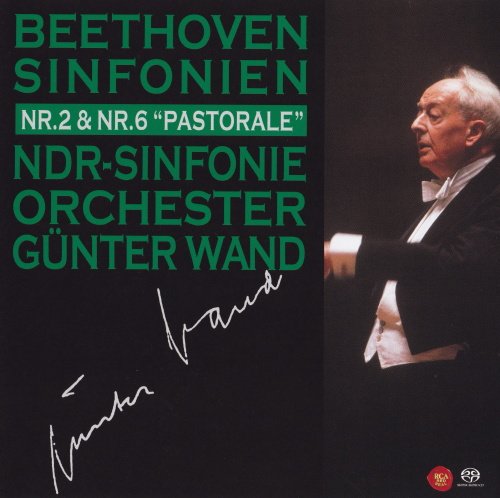

Tracklist:
Ludwig van Beethoven - Sinfonie Nr. 2 D-Dur, Op. 36:
1. I. Adagio molto - Allegro con brio 11:44
2. II. Larghetto 10:31
3. III. Scherzo. Allegro 3:41
4. IV. Allegro molto 7:00
Ludwig van Beethoven - Sinfonie Nr. 6 F-Dur, Op. 68 "Pastorale":
5. I. Allegro ma non troppo "Erwachen heiterer Gefuhle bei der Ankunft auf dem Lande" 13:23
6. II. Andante molto mosso "Szene am Bach" 12:07
7. III. Allegro "Lustiges Zusammensein der Landleute" 6:05
8. IV. Allegro "Gewitter und Sturm" 3:41
9. V. Allegretto "Hirtengesange - Frohe und dankbare Gefuhle nach dem Sturm" 9:34
SACD 3: BVCC-37475 Symphonies Nos.4 & 5
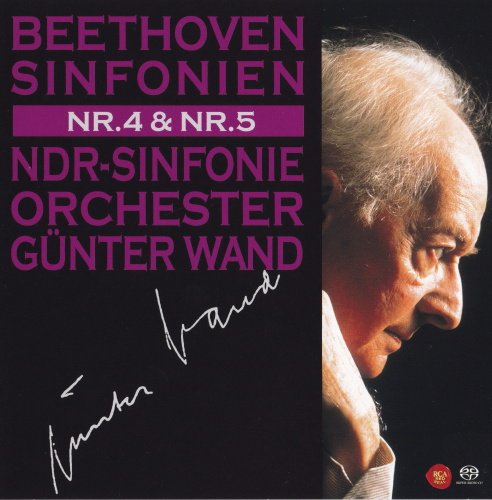

Tracklist:
Ludwig van Beethoven - Sinfonie Nr. 4 B-Dur, Op. 60:
1. I. Adagio - Allegro vivace 12:16
2. II. Adagio 9:59
3. III. Menuetto. Allegro vivace 6:04
4. IV. Allegro ma non troppo 7:07
Ludwig van Beethoven - Sinfonie Nr. 5 c-Moll, Op. 67:
5. I. Allegro con brio 7:15
6. II. Andante con moto 9:37
7. III. Scherzo. Allegro 5:14
8. IV. Allegro 10:21
SACD 4: BVCC-37476 Symphonies Nos.7 & 8
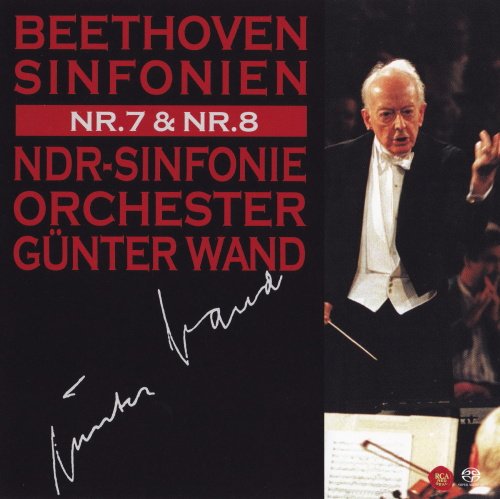

Tracklist:
Ludwig van Beethoven - Sinfonie Nr. 7 A-Dur, Op. 92:
1. I. Poco sostenuto - Vivace 15:17
2. II. Allegretto 7:50
3. III. Presto 10:10
4. IV. Allegro con brio 9:00
Ludwig van Beethoven - Sinfonie Nr. 8 F-Dur, Op. 93:
5. I. Allegro vivace e con brio 9:25
6. II. Allegretto scherzando 3:48
7. III. Tempo di menuetto 4:42
8. IV. Allegro vivace 7:46
SACD 5: BVCC-37477 Symphony No.9
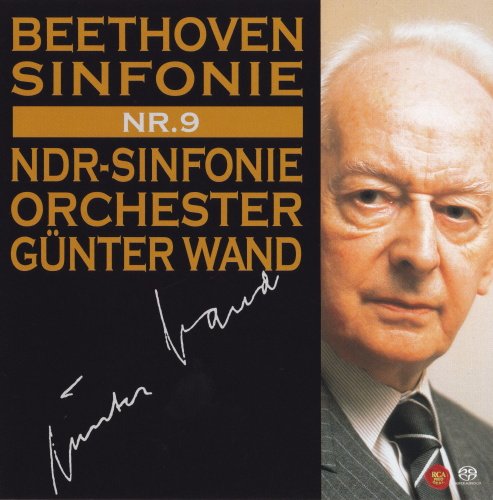

Tracklist:
Ludwig van Beethoven - Sinfonie Nr. 9 d-Moll, Op. 125:
1. I. Allegro ma non troppo, un poco maestoso 15:29
2. II. Molto vivace - Presto 11:13
3. III. Adagio molto e cantabile 16:00
4. IV. Presto 5:59
5. V. Presto - O Freunde, Nicht Diese Tone! Allegro Assai 17:37
Conductor Günter Wand was one of a handful of musicians who were working before World War II and whose career remained viable at the end of the twentieth century. In contrast to the best known of his peers, Sir Georg Solti and Rafael Kubelik, he was the opposite of the jetset, international conductor, and limited the number and scope of his engagements, primarily in Europe. Although Wand composed a small number of works, including ballet music, orchestral songs, and one cantata, he was known by most listeners as a conductor. His performances were noted for their precise attention to detail and special care in matters of stylistic propriety.
Wand studied at the Cologne Conservatory, initially as a composition and piano student. His conducting technique was almost entirely self-taught. He began his career in Wuppertal and Allenstein as a repetiteur and conductor, and was later made chief conductor in Detmold. In 1939, he was appointed a conductor, and subsequently first conductor, with the Cologne Opera, where he remained until the opera house was destroyed by Allied bombing raids in 1944. He then became conductor of the Salzburg Mozarteum Orchestra for the remainder of the war, until April 1945. With the end of fighting, he returned to Cologne to begin reconstructing the city's musical life, first as music director of the Cologne Opera, where he remained for three years (1945-1948), and as director of concerts, initially a 10-year appointment that was later extended for life. He taught music in the city, and became a professor at the Hochschule für Musik in 1948. He also became head of the Gürzenich Orchestra, a post he held until 1974.
Wand began making appearances as a guest conductor throughout Europe during the early 1950s, including his British debut with the London Symphony Orchestra in 1951. His guest appearances included concerts in the Soviet Union and Japan. His professional life, however, remained centered in Cologne, where he was at the center of the revived city's musical life. In addition to his performances of the mainstream German-Austrian repertory -- Beethoven, Schubert, Brahms, and Bruckner -- he was a major advocate of the works of such contemporary composers as Ligeti, Varèse, and Zimmermann, and recorded the music of Frank Martin and Anton Webern.
Wand resigned his Cologne positions in 1974 and moved to Switzerland, where he became a regular guest conductor of the Berne Symphony Orchestra. After 1974, he began working more closely with the various broadcast orchestras in Germany and elsewhere in Europe, and was also hailed for his performances of the operas of Mozart and Verdi. Wand recorded exclusively for RCA/BMG, including all of Bruckner's symphonies -- a major feat at the time -- with the Cologne Radio Symphony Orchestra, as well as Schubert's extant eight symphonies; and he later recorded the Schubert symphonies with the NDR symphony and the Berlin Philharmonic. From 1982 until 1991, he also took over the post of music director of the Radio Symphony Orchestra of Hamburg. Among his recordings are the complete Brahms and Beethoven symphonies. These recordings have attracted a substantial international following, acclaimed for their attention to the details of the written score and the spirituality of the playing. -- Bruce Eder
Wand studied at the Cologne Conservatory, initially as a composition and piano student. His conducting technique was almost entirely self-taught. He began his career in Wuppertal and Allenstein as a repetiteur and conductor, and was later made chief conductor in Detmold. In 1939, he was appointed a conductor, and subsequently first conductor, with the Cologne Opera, where he remained until the opera house was destroyed by Allied bombing raids in 1944. He then became conductor of the Salzburg Mozarteum Orchestra for the remainder of the war, until April 1945. With the end of fighting, he returned to Cologne to begin reconstructing the city's musical life, first as music director of the Cologne Opera, where he remained for three years (1945-1948), and as director of concerts, initially a 10-year appointment that was later extended for life. He taught music in the city, and became a professor at the Hochschule für Musik in 1948. He also became head of the Gürzenich Orchestra, a post he held until 1974.
Wand began making appearances as a guest conductor throughout Europe during the early 1950s, including his British debut with the London Symphony Orchestra in 1951. His guest appearances included concerts in the Soviet Union and Japan. His professional life, however, remained centered in Cologne, where he was at the center of the revived city's musical life. In addition to his performances of the mainstream German-Austrian repertory -- Beethoven, Schubert, Brahms, and Bruckner -- he was a major advocate of the works of such contemporary composers as Ligeti, Varèse, and Zimmermann, and recorded the music of Frank Martin and Anton Webern.
Wand resigned his Cologne positions in 1974 and moved to Switzerland, where he became a regular guest conductor of the Berne Symphony Orchestra. After 1974, he began working more closely with the various broadcast orchestras in Germany and elsewhere in Europe, and was also hailed for his performances of the operas of Mozart and Verdi. Wand recorded exclusively for RCA/BMG, including all of Bruckner's symphonies -- a major feat at the time -- with the Cologne Radio Symphony Orchestra, as well as Schubert's extant eight symphonies; and he later recorded the Schubert symphonies with the NDR symphony and the Berlin Philharmonic. From 1982 until 1991, he also took over the post of music director of the Radio Symphony Orchestra of Hamburg. Among his recordings are the complete Brahms and Beethoven symphonies. These recordings have attracted a substantial international following, acclaimed for their attention to the details of the written score and the spirituality of the playing. -- Bruce Eder




